A CNC woodworking router is a computer-controlled cutting machine used for shaping, carving, and milling wood materials. It combines a router spindle with precise computer numerical control (CNC) technology to automate and streamline woodworking processes.
Cnc Woodworking Router Some Common Types
CNC Engraving Machines
These machines are designed for precision engraving and detailing on wood surfaces. They are often used for artistic woodworking, sign-making, and decorative woodworking projects.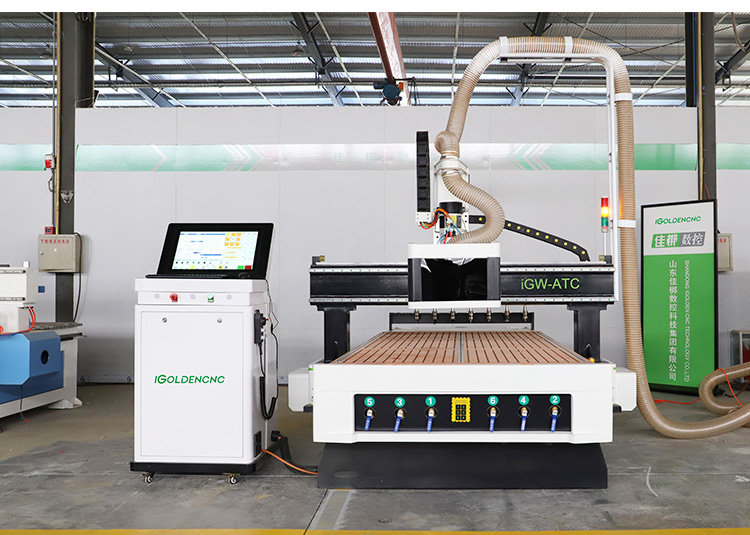
3-Axis CNC Routers
3-axis routers move along three axes (X, Y, and Z) to perform flat and simple 3D cuts. Ideal for general woodworking tasks like cutting panels, carving designs, and creating basic 3D shapes.
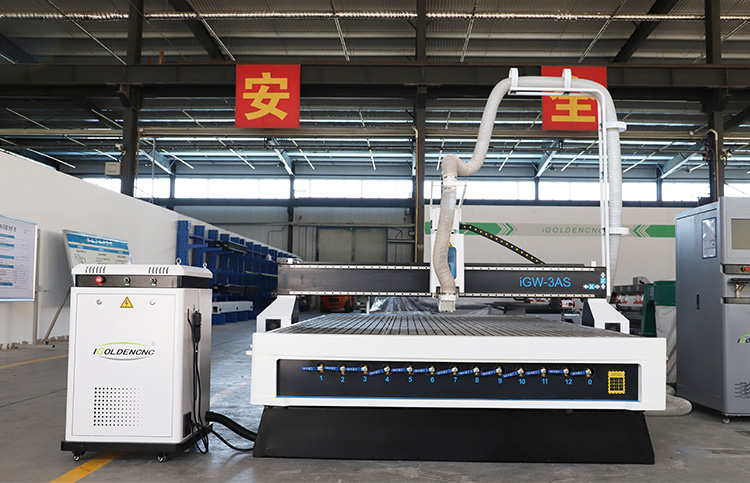
4-Axis CNC Routers
4-axis routers have the capability to move along three linear axes (X, Y, and Z) and one rotary axis (A). Suitable for more complex 3D machining tasks, such as carving cylindrical shapes and intricate designs.
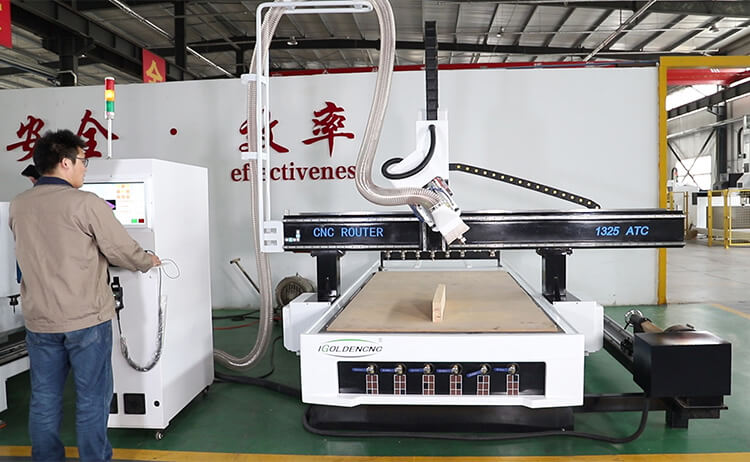
5-Axis CNC Routers
5-axis routers have the ability to move along three linear axes (X, Y, and Z) and two rotary axes (A and B). Used for highly complex and intricate 3D machining tasks, allowing for more dynamic and creative woodworking.
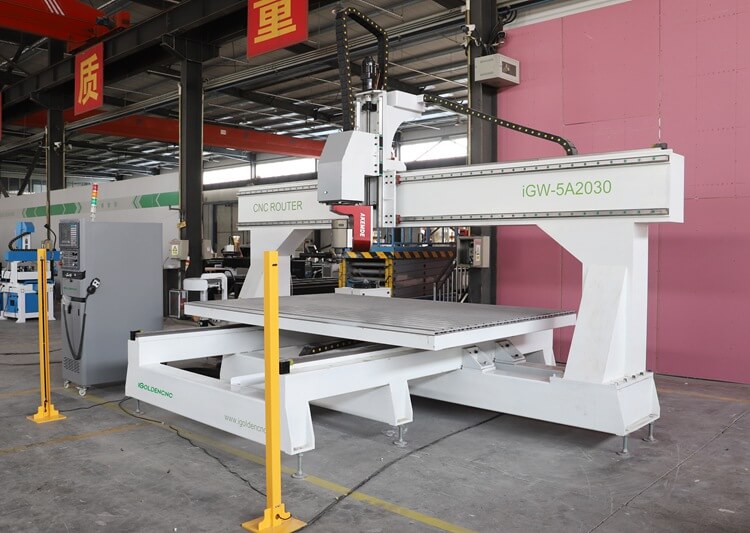
ATC (Automatic Tool Changer) CNC Routers
These routers are equipped with an automatic tool changer, enabling the machine to change cutting tools automatically during a job. Ideal for projects that require multiple tool changes for different operations without manual intervention.
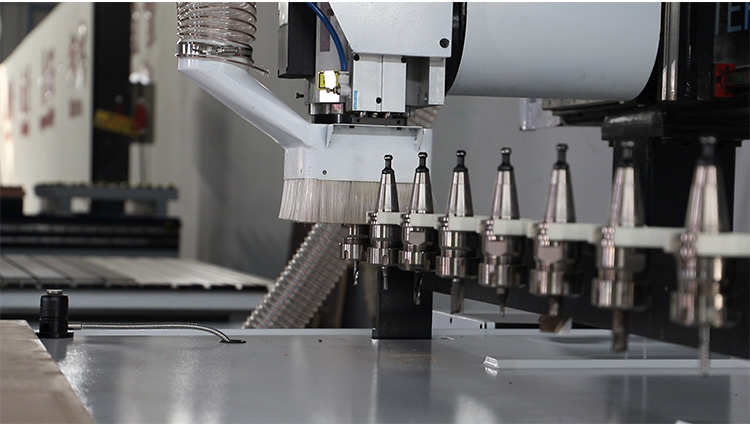
Nested-Based CNC Routers
Designed for efficient sheet processing, nested-based routers maximize material usage by cutting multiple parts from a single sheet. Commonly used in cabinet making and furniture production.
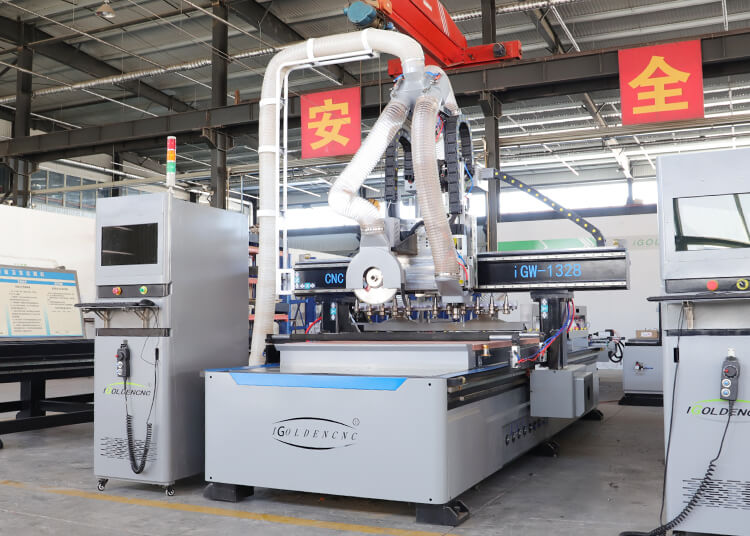
Large Format CNC Routers
Larger machines designed to handle large workpieces and sheets. Used in the production of large-scale woodworking projects such as architectural components and furniture.
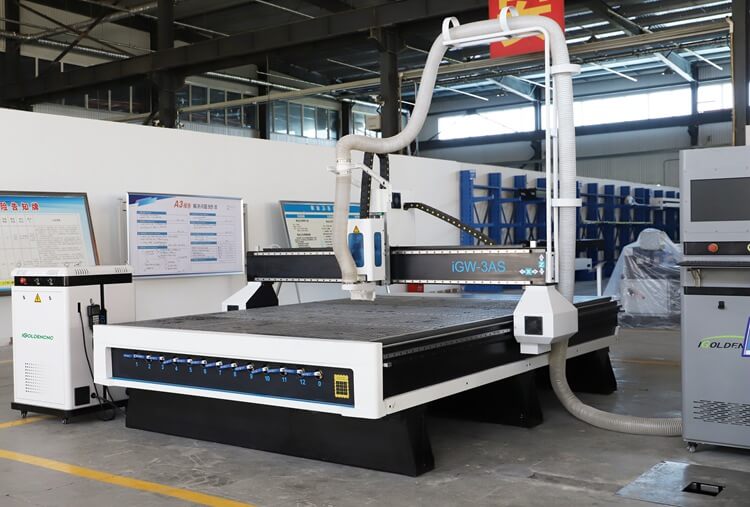
Desktop CNC Routers
Compact and smaller machines suitable for hobbyists, small workshops, or educational purposes. Capable of handling smaller woodworking projects and prototypes.
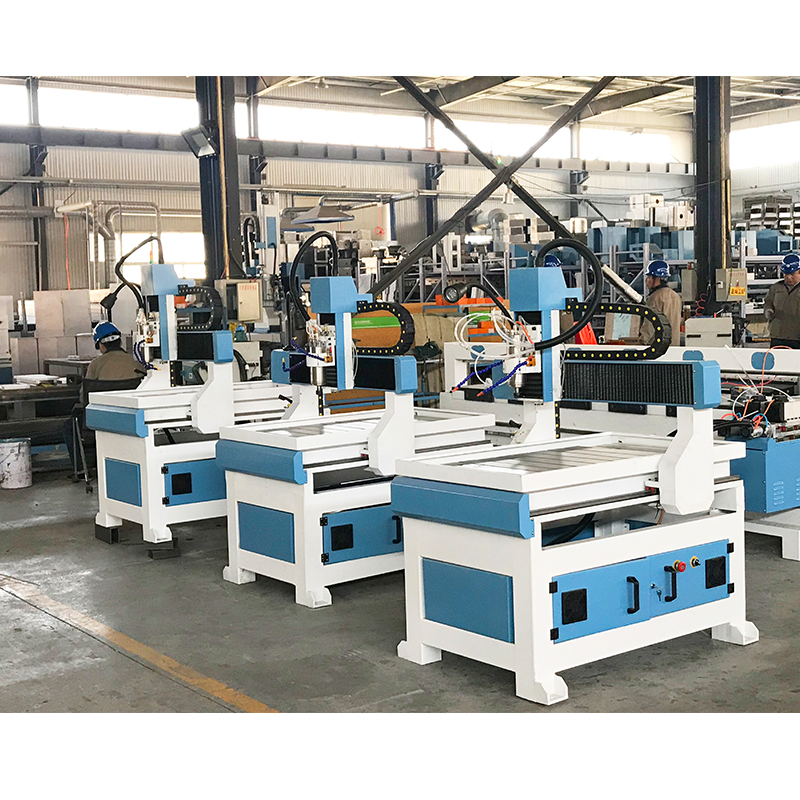
Multi-Spindle CNC Routers
Equipped with multiple spindles, allowing for simultaneous cutting of multiple identical parts. Increases production efficiency for batch processing.
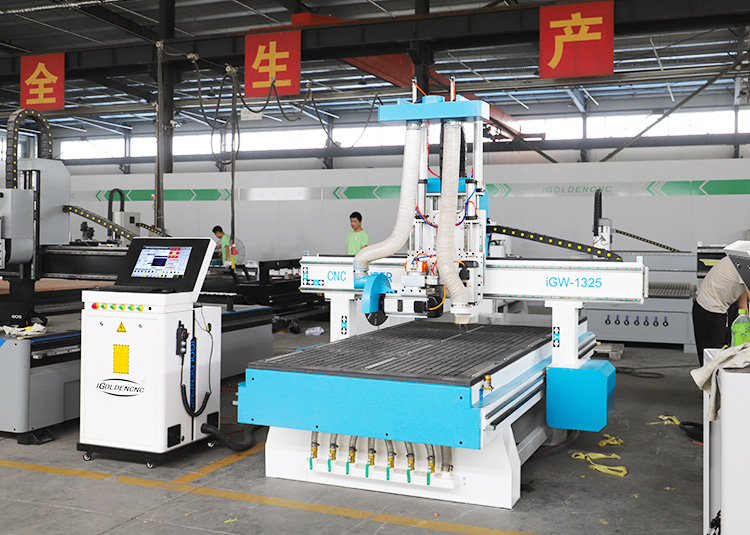
CNC Laser Engraving and Cutting Machines
While not routers in the traditional sense, CNC laser machines can be used for cutting and engraving wood. Suitable for intricate designs, fine detailing, and precision cutting.
Key Points About CNC Woodworking Routers
- CNC Technology: A CNC woodworking router operates based on CNC technology, which involves using computer-aided design (CAD) software to create a digital design or model of the desired woodwork. The CNC machine reads the design file and translates it into precise instructions for the router’s movements and cutting paths.
- Routing Process: The router spindle on a CNC woodworking router rotates at high speeds, typically using various cutting bits or tools to remove material from the wood. The router moves along multiple axes (usually three or more) according to the programmed instructions, allowing for complex cuts, engravings, and intricate designs. The cutting depth, speed, and tool changes are all controlled by the CNC system.
- Versatile Woodworking Operations: CNC woodworking routers can perform a wide range of woodworking operations. These include cutting, shaping, carving, engraving, grooving, drilling, and even 3D milling. They can produce intricate details, curves, chamfers, and joints with high accuracy and repeatability.
- Design Flexibility: With CNC technology, CNC woodworking routers offer great design flexibility. They can work with 2D and 3D designs, allowing for the creation of custom furniture, cabinetry, signs, decorative elements, and more. The CNC software enables precise control over the cutting paths, enabling intricate and complex designs that would be challenging or time-consuming to achieve manually.
- Material Compatibility: CNC woodworking routers can work with various types of wood, including hardwood, softwood, plywood, MDF (medium-density fiberboard), and more. They can also handle other materials such as acrylic, plastics, and certain composites. The choice of cutting tools and router settings can be adjusted based on the specific material being worked on.
- Efficiency and Precision: CNC woodworking routers offer high efficiency and precision. They can perform tasks quickly and consistently, reducing manual labor and production time. The CNC system ensures accurate and repeatable cuts, resulting in precise fits and high-quality finishes.
- Safety Considerations: Safety is essential when operating a CNC woodworking router. Proper training and adherence to safety guidelines are necessary to prevent accidents. Safety features such as emergency stop buttons, machine enclosures, and dust collection systems should be used. Personal protective equipment (PPE) like safety glasses, hearing protection, and dust masks should be worn as required.
- Maintenance and Software Updates: Regular maintenance is important to keep the CNC woodworking router in optimal condition. This includes cleaning, lubrication, and inspection of mechanical components, as well as maintaining the router spindle and changing cutting tools as needed. It’s also important to keep the CNC software up to date and to have backup systems in place to prevent data loss.
When choosing a CNC woodworking router, considerations include the type of work you intend to perform, the size of the workpieces, the level of precision required, and your production volume. Additionally, proper training in CNC programming and machine operation is essential for achieving optimal results and ensuring safety.

IGOLDEN BLOG
Thank you for visiting the iGOLDENCNC website. iGOLDENCNC is the professional supplier of CNC machinery application solution, within the business of producing and selling CNC machinery and accessories.